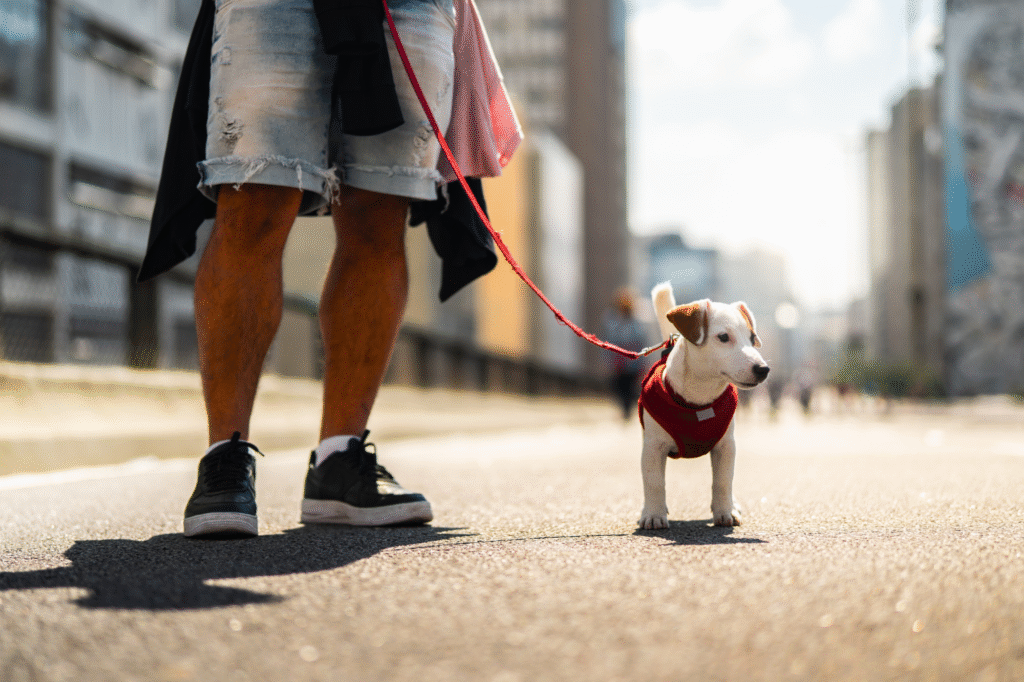Scientists say climate-driven heat waves are putting dogs at risk like never before.

Heat waves used to feel rare, but now they’re rolling in faster, hotter, and staying longer. Dogs are paying the price in ways owners don’t always see until it’s too late. Experts have tracked a spike in deaths directly tied to soaring temperatures, and the numbers are grim. Here’s what this means for your dog and why keeping them cool has become a non-negotiable survival skill in today’s changing climate.
1) Heat waves now start earlier and catch dogs off guard.

According to the National Oceanic and Atmospheric Administration, climate change is making heat waves arrive weeks earlier than in past decades. Dogs who haven’t shed their winter undercoats or acclimated to rising temperatures face serious risk when spring suddenly feels like mid-July. This shift means even healthy dogs can overheat faster than owners expect. Early-season heat waves often lack the usual warning signs, leaving many unprepared for how quickly pets can slide from overheated to critical.
2) Pavement burns paws faster than you think.

As stated by the American Veterinary Medical Association, asphalt and concrete surfaces can reach temperatures over 120 degrees on hot days, easily burning paw pads within seconds. Dogs regulate their body heat partly through their feet, and burns compromise that process, making overheating worse. Owners often underestimate how hot surfaces can get, assuming quick walks are harmless. That mistake can lead to painful injuries and elevated core temperatures, setting off a dangerous chain reaction in already stressful heat.
3) Brachycephalic breeds take the biggest hit.

Reported by the Journal of Thermal Biology, flat-faced breeds like Bulldogs and Pugs are far more likely to experience heat stress and death compared to other breeds. Their shortened airways make it harder to cool down through panting, their primary temperature-regulation method. Combine this with high humidity or sudden heat spikes, and these dogs struggle to maintain safe body temperatures. Owners of these breeds often don’t realize how quickly their pets can go from warm to life-threateningly hot.
4) Humidity doubles the danger without looking dramatic.

Even moderate heat becomes hazardous when humidity is high because panting works less efficiently in heavy air. Dogs essentially lose their natural cooling mechanism, even while sitting in the shade. Many owners rely only on temperature numbers and miss the combined heat index, which explains why some dogs collapse during conditions that don’t seem extreme. It’s silent, subtle, and deadly, especially for older or overweight pets.
5) Overweight dogs are silently at higher risk.

Carrying extra weight makes regulating body heat harder, causing obese dogs to overheat faster. Fat acts like insulation, which works in winter but backfires during summer or during sudden heat events. Dogs with weight issues may seem fine on cooler days but struggle under temperature swings, even with minimal activity. This hidden risk often surprises owners who assume a slow walk is safe, only to watch their dog tire quickly and breathe heavily in mild heat.
6) Urban areas amplify the risk with the heat island effect.

Cities trap and retain heat due to concrete, asphalt, and fewer trees, making urban temperatures several degrees hotter than nearby rural areas. Dogs in these spaces often experience extreme heat longer, with fewer opportunities to cool down naturally. Nighttime temperatures also stay higher, offering little relief. This means a walk after dark may still be hazardous, something many city dog owners don’t account for until their pet shows signs of distress.
7) Car interiors turn deadly in minutes.

Even on mild days, car interiors heat up rapidly, and leaving a dog inside—even briefly—can be fatal. Windows cracked open or shaded parking doesn’t stop the temperature from spiking well above safe levels. Dogs’ bodies are built for outdoor environments, not enclosed hot spaces, and the lack of airflow can quickly overwhelm their ability to regulate temperature. This remains one of the most preventable causes of heat-related deaths in pets.
8) Lack of shade creates hidden outdoor hazards.

Outdoor dogs often face added danger because their enclosures or yards lack adequate shade. Sun exposure not only raises body temperature but also limits rest and recovery. Even with access to water, dogs can overheat if they don’t have a place to escape direct sunlight. Many owners assume a small structure is enough, but poorly ventilated shelters can act like ovens, worsening the problem rather than solving it.
9) Some medications intensify heat sensitivity.

Dogs on certain medications, including those for heart conditions or behavioral issues, may have reduced tolerance for high temperatures. These drugs can alter circulation, hydration, and cooling capacity. Owners often don’t connect side effects with heat risk, leaving vulnerable pets exposed during temperature spikes. A simple conversation with a veterinarian about seasonal adjustments can prevent these avoidable tragedies.
10) Extreme heat events are now frequent enough to demand new routines.

What used to be occasional “heat emergencies” are now common summer events, forcing owners to rethink everything from walk times to travel plans. Avoiding midday exposure, prioritizing cooling gear like vests, and monitoring for signs of heat stress have become basic survival strategies. Dogs may not understand why routines shift, but their bodies appreciate the protection. These new habits reflect a permanent change in how pets live during summer, not just a one-time adjustment.

ps5ze9